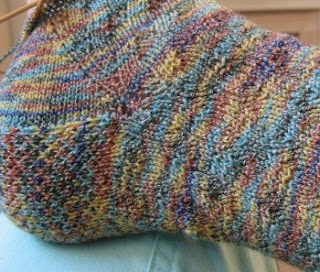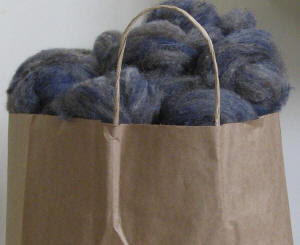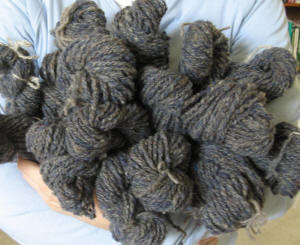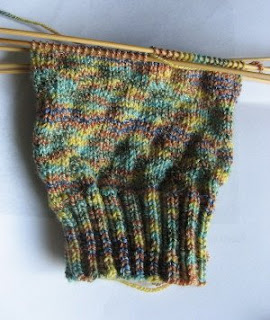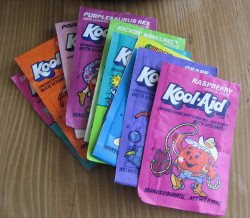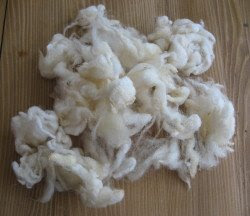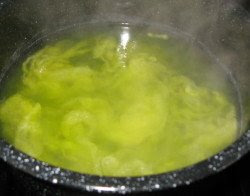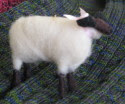This weekend we drove north to a green and pleasant suburb of New York city. On the trip up, construction on Route 95 afforded us plenty of time -- hours, in fact -- to enjoy a few miles of Delaware highway scenery. Plenty of time also for making progress on the conveniently portable Mockery socks, anyway.
 After a restorative night's sleep, we found ourselves, with time to spare before an evening wedding, only a few miles away from a low-key treasure, Playland Park in Rye, New York. Playland is an old-fashioned amusement park, opened in 1928 and situated on the waterfront on the Long Island Sound. It featured in the 1988 Tom Hanks movie "Big" as the abandoned amusement park where the boys go in search of the fortune-telling machine.
After a restorative night's sleep, we found ourselves, with time to spare before an evening wedding, only a few miles away from a low-key treasure, Playland Park in Rye, New York. Playland is an old-fashioned amusement park, opened in 1928 and situated on the waterfront on the Long Island Sound. It featured in the 1988 Tom Hanks movie "Big" as the abandoned amusement park where the boys go in search of the fortune-telling machine.With gracious old architecture and pennants flying and wooden rollercoasters and a house of mirrors and tall shady trees and mini-golf on the water and hardly any crowds, it's a gentler experience than many modern attractions.
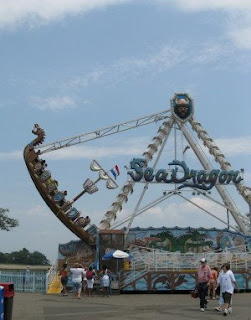 It has rides that give you views out over the Sound when you're aloft.
It has rides that give you views out over the Sound when you're aloft.It has bumper cars and a little train. It has a ride that sends you swooping through the sky strapped in face down as if you were really flying. It has hot dogs and an ice rink and fountains and a singing and dancing show with Elvis Presley songs.
 And there's nothing sissy about those wooden roller coasters. They hurl you around tight corners and tease you with shallow bumps then hurtle headlong into sudden steep troughs. Sometimes they creak, so you wonder how solid they are. On the Dragon Coaster, the car is swallowed up into the mouth of a dragon and you veer wildly from side to side in the darkness. Wonderful.
And there's nothing sissy about those wooden roller coasters. They hurl you around tight corners and tease you with shallow bumps then hurtle headlong into sudden steep troughs. Sometimes they creak, so you wonder how solid they are. On the Dragon Coaster, the car is swallowed up into the mouth of a dragon and you veer wildly from side to side in the darkness. Wonderful.And then, after a hearty dose of Playland fun and a bit of cleaning up, there was a wedding to enjoy. With a lovely serene bride whom we remember as a flower girl in a bygone wedding. Flowers now in her hair, and a level gaze of contentment, and a gown made by her proud mother. A thrilled groom, taking deep breaths to steady himself. A verdant garden setting. A sweet sister singing a heartfelt song. A lucky clear summer day with a breeze and, later, a momentary sprinkle, just enough to make a rainbow for them.
A reception later with raucous, happy friends and relatives and loads of dancing.
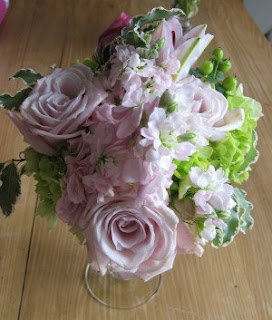 Truly a lovely day. And at the end of it all, a flower arrangement to remember it by. It's a little the worse for wear from the long ride home on a hot day, bounced around once or twice, but still so pretty.
Truly a lovely day. And at the end of it all, a flower arrangement to remember it by. It's a little the worse for wear from the long ride home on a hot day, bounced around once or twice, but still so pretty.On the way home, the socks came this close to being finished.
But all in all, a great weekend.
